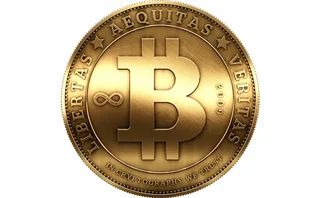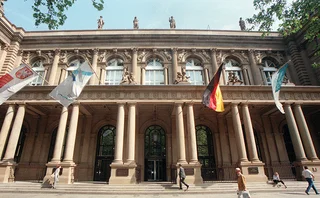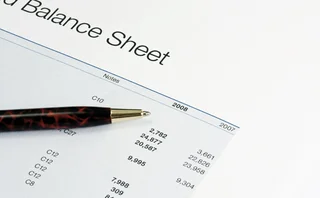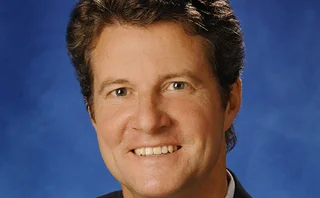
Gas hubs jockey for position
The Bunde-Oude natural gas hub on the German-Dutch border is the most likely candidate to become the Henry Hub of Europe, according to a survey of European natural gas experts conducted by Maycroft Consultancy Services

Which is why Amsterdam-based Maycroft Consultancy Services has published a researchreport, Towards a competitive European natural gas market, that focuses not onlyon the situation on the European continent, but also the US and UK markets.
The research is based on in-depth market analysis and several interviews withindustry experts concerning the development of the European gas trading market(see box). Especially interesting are their views on which hubs and exchangeswill be the likely winners and losers.
EuroHub v. Hubco
The most talked-about hub at present – Bunde-Oude, on the Dutch-Germanborder – is the connection point of several pipelines from Holland, Norwayand Russia and has substantial storage capacity. Hence, it has many significantparticipants, such as Statoil, Gasunie, Rurhgas, BEB and Wingas. Despite itsexcellent position, this region faces two major problems that could hinder itsdevelopment.
First of all, two competing hubs service the area: EuroHub and Hubco, which splitliquidity. Some of the experts interviewed for the survey even believe the integratedGerman firms that own Hubco set up an alternative deliberately to hamper EuroHub’sdevelopment.
The second problem is that the German market is far from fair and competitiveand is dominated by a few fully integrated natural gas companies. This seemsto be the main reason for EuroHub’s unwillingness to co-operate or mergewith Hubco.
Yet having two competing markets for the same region is nothing new. In electricity,there were two electricity exchanges in Germany: one in Leipzig and one in Frankfurt.The market forced them to merge. The simple fact is, if the two hubs don’tmerge, the market players will just pick the one they believe to be better, andliquidity will concentrate there.
Alternatively, market liquidity will concentrate in a hub in a different location.A merger of the two hubs is only possible if the EU and the German governmentsolves the problems in the German market resolves its problems.
A positive step is the plan to set up a regulator in Germany by July 2004. Ifthe government were also to unbundle the integrated companies, a fully independenthub could transform the northwest European natural gas market – it wouldboost trading opportunities from the UK through Zeebrugge on the Belgian coastand into Bunde.
EuroHub’s commercial affairs director, Rob Mulder, says that in two orthree years a well developed and liquid spot market will exist in the Bunde-Ouderegion. “As soon as the regulator in Germany introduces an entry-exit system,this may indeed become reality,” Mulder says.
But experts foresee a further danger to Eurohub’s development. At present,trading in the Netherlands is focused on the Title Transfer Facility (TTF) point,a virtual trading point for delivery in the Netherlands, similar to the nationalbalancing point (NBP) in the UK. This situation seems likely to be self-strengthening,as the growing liquidity attracts more and more traders. Yet at the same timea sound national TTF may well stimulate trading at the international hub, sinceit creates a certain flow and familiarises participants with a well functioningmarket system.
Other hubs
If the two hubs in the Bunde-Oude region cannot benefit from their advantageousposition, there are other likely candidates for becoming the leading internationalhub: Zeebrugge, Baumgarten on the Austrian-Slovak border or the NBP in the UK.
For the time being, Zeebrugge is the most heavily traded hub in continental Europe.It has 52 participants, of which 40 trade at the hub on a daily basis. Yet mostexperts see Zeebrugge as an extension of the NBP and therefore feel it is unlikelythat Zeebrugge will become an international hub.
Only if Zeebrugge can stay ahead of its competition by being the first to offershort-term trading, financial instruments and clearing and, most of all, by attractingliquidity, can it cash in on its first-mover advantage. It could certainly helpthat it has a liquefied natural gas terminal, is working on more sources of supplyand that Loenhout’s 1 billion cubic metres of storage capacity for thirdparties, with published tariffs, will open soon.
The NBP is not the most logical location for an international European naturalgas trading hub. There just aren’t enough sources of supply there, eventhough more connections are being built, including one to Norway. However, theNBP is the only hub that already operates in a mature market.
Experts believe that the NBP becoming the leading trading hub in Europe woulddepend on two factors. The first is the time it takes to transform the continentalEuropean natural gas market into a fair competitive one. The longer it takes,the better are the chances of the NBP becoming an international hub. The secondfactor is how quickly the new pipelines will be in operation.
Baumgarten in Austria is very well placed as the gateway for Russian gas intowestern Europe. While many experts believe Baumgarten has good opportunitiesto become the second market for natural gas, behind Bunde-Oude, there seems tobe one major hindrance for its development. That is the dependency on the majorsupplier, Russian utility Gazprom.
Only if Gazprom were to release a lot of natural gas for the short-term marketat Baumgarten would short-term trading develop and, eventually, a spot marketoriginate. But Gazprom is unlikely to give up some of its market power withoutan incentive.
Europe’s energy exchanges are following the gas trading developments withinterest. London’s International Petroleum Exchange (IPE) says it is mostlikely to index Bunde-Oude in the future. An IPE spokesman says his exchangeand the London Clearing House (LCH) will bring their expertise and services tothe continent.
The LCH wants to do the clearing for both over-the-counter and exchange gas tradingin continental Europe. Hence, LCH has already partnered with Endex, an Amsterdam-basedclearing house for the Benelux region, to offer clearing services in electricityand with the intention of offering gas services in the future. But the two firmswill face stiff competition from the European Energy Exchange (EEX), AmsterdamPower Exchange and Paris-based Powernext, among others. Most experts believethe EEX is the most likely candidate to attract the liquidity in financial contracts.
The Maycroft report’s authors, Kasper Walet and Cyriel de Jong, believethat if trading takes off, it might not take long for a mature market to develop.It is mainly up to EU states’ governments to create the right conditionsfor such a market.
Condensed from Towards a competitive European natural gas market: Lessons from the United States and United Kingdom by Kasper Walet and Cyriel de Jong of Maycroft Consultancy Services.
email: office@maycroft.com
| How gas trading is developing |
| The liberalisation of natural gas prices and increasing flexibility in the gas market promotes the development of market centres and hubs. A hub is a point where major connections of natural gas pipelines meet and form a market. Many buyers and sellers at this point trade in natural gas and in the location of the delivery of this gas. Hubs in the US and UK are increasingly extending their services from the physical transfer of natural gas to storage, processing and trading services. The concentration of trading in markets and hubs will in turn promote the development of natural gas spot markets. A well functioning spot market could lead to the development of a financial market. The development of financial gas trading is important, because it allows non-gas players, such as banks, institutional investors and pure trading firms, to enter the market and take on gas-specific risks. This risk is easily diversified away in their overall portfolios, but may weigh heavily on gas firms. Financial gas contracts are used to manage two types of risk in the natural gas market: price and basis risk. Price risk is generated by the volatile spot market prices of natural gas. Basis risk is the risk of change in the price differential between locations, time periods, and qualities of natural gas deliveries, and between natural gas and other commodities. Transparency and liquidity are the fundamentals for success for a natural gas trading hub. For this to originate there are a lot of operational and commercial requirements. |
Only users who have a paid subscription or are part of a corporate subscription are able to print or copy content.
To access these options, along with all other subscription benefits, please contact info@risk.net or view our subscription options here: http://subscriptions.risk.net/subscribe
You are currently unable to print this content. Please contact info@risk.net to find out more.
You are currently unable to copy this content. Please contact info@risk.net to find out more.
Copyright Infopro Digital Limited. All rights reserved.
You may share this content using our article tools. Printing this content is for the sole use of the Authorised User (named subscriber), as outlined in our terms and conditions - https://www.infopro-insight.com/terms-conditions/insight-subscriptions/
If you would like to purchase additional rights please email info@risk.net
Copyright Infopro Digital Limited. All rights reserved.
You may share this content using our article tools. Copying this content is for the sole use of the Authorised User (named subscriber), as outlined in our terms and conditions - https://www.infopro-insight.com/terms-conditions/insight-subscriptions/
If you would like to purchase additional rights please email info@risk.net
More on Exchanges
Asia’s ETF assets on the rise – HKEX presents the results of Asia ETF survey 2019
Asia’s total ETF assets surged by 23.9% in the first half of 2019 thanks to an increasing adoption of ETFs into investment portfolios. According to a survey conducted by Hong Kong Exchanges and Clearing (HKEX), asset expansion in Asia’s ETF market is set…
NYSE Offers Exchange-Calculated Bitcoin Index, with More to Come
NYXBT will initially be based off data from Coinbase Exchange.
Deutsche Börse to set up Europe's first multi-asset RMB platform
German exchange group signs joint venture deal with CFFEX and Shanghai Stock Exchange
Exchange Revenue Figures Rise, Fall; Data Revenues Continue Steady Increase
A mostly positive mix of Q1 results also yield big increases in data revenues for some exchanges.
Lift-off for ASX Aussie dollar swap clearing business
Volumes jump following revamp of Sydney bourse's clearing incentive scheme
Exchange Data Revenues Make Positive Start to 2015
Acquisitions made up for some shortfalls in exchange revenues
CME looks to local banks for FX liquidity in emerging markets
Chicago-based exchange targets China, India and LatAm growth
Most read
- Too soon to say good riddance to banks’ public enemy number one
- Breaking out of the cells: banks’ long goodbye to spreadsheets
- Basel III endgame: why moving fast might prove better for banks







